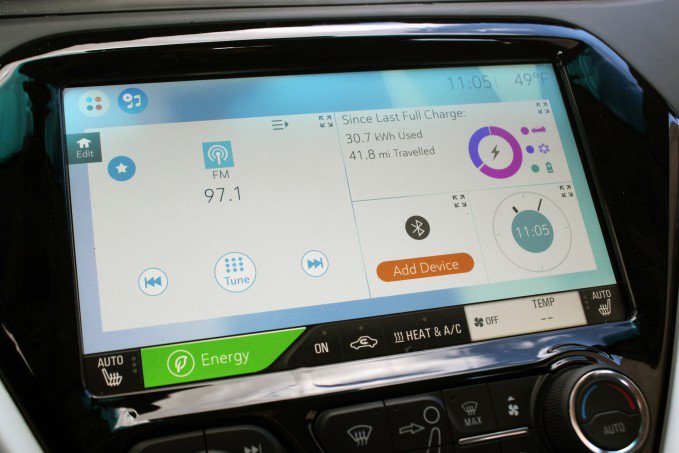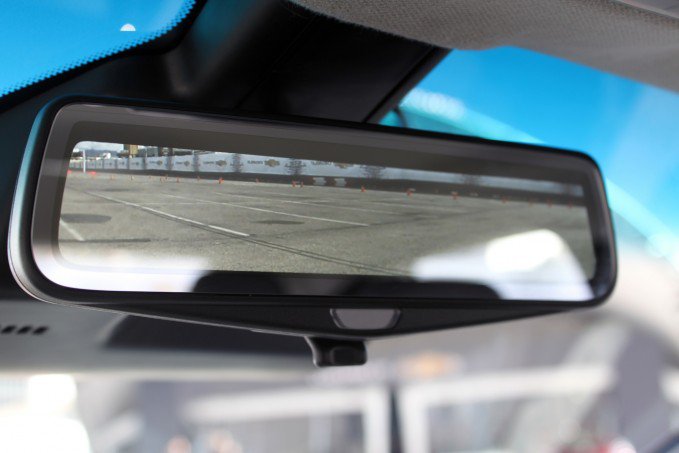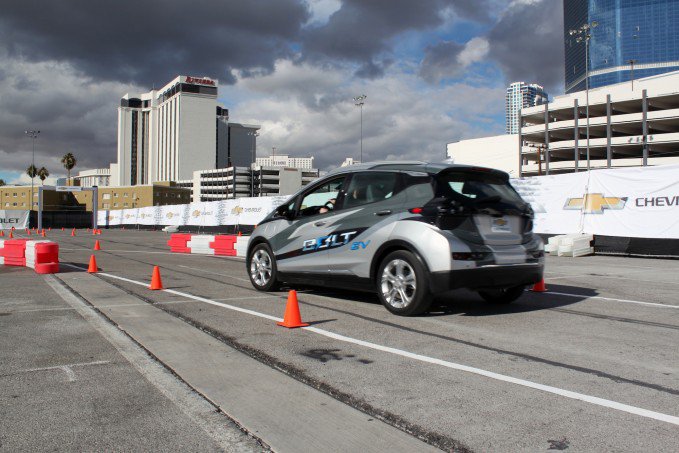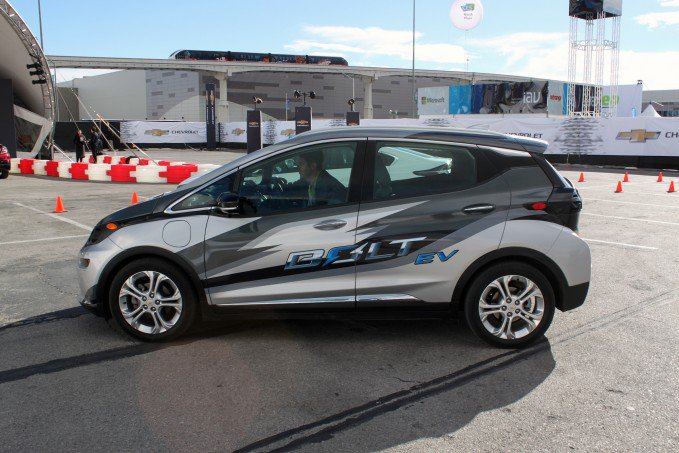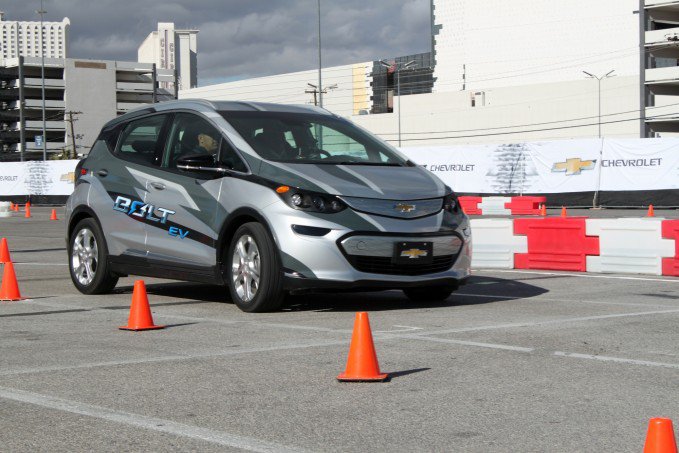Electric vehicles have it tough: typically, people think they’re slow, they take a long time to recharge, they’re limited in range and they’re expensive.
The popular Tesla Model S handles the former three elements, offering a blistering fast sedan, about 270 miles of range and a network of fast-charging stations that will give the car an additional 170 miles after just 30 minutes of charging. But with a price tag that can easily reach six digits, the Model S just isn’t feasible for many car owners.
That’s where Chevrolet is stepping in with the Bolt, an electric car for the masses. Not only is it promising 200 miles of range on a single charge, but it intends to do that while coming in at about $30,000 after government incentives, a price point that’s attractive for anyone.
We had a chance to drive a pre-production version of the Bolt, which was described as 80 percent of the finished vehicle. It was indeed missing final headlights and tail lights, and the interior was covered, but the key components were all there. Here’s what we can report on:
Interior
The moment you jump into the Bolt, it becomes clear that Chevy is going heavy on the high-tech vibe. Like the Volt, there’s an eight-inch digital gauge that shows your speed and remaining range. In the center of the dashboard is a 10.2-inch touchscreen that has very unique design language. Instead of the dark and drab look of Chevrolet’s MyLink, the Bolt’s screen has a white background, with bright images and large icons. It reminds me of an iPad and when the screen starts to display driving statistics, the graphics are easy to understand at a glance.
The gear selector reminds me of a BMW’s. It’s a toggle that re-centers after your nudge it up (for Neutral) or down (for Drive.) There’s also a Park button on the stalk. Glance upwards toward the rear-view mirror and you’ll see not just a mirror, but a display. Indeed, this is a live display of the Bolt’s rear-view camera, and it’s on all the time. The technology, previously announced for the prestigious Cadillac CT6, has huge safety benefits, as it features an 80-degree range of vision, instead of the 22 degrees that a typical rear-view mirror provides.
Other parts of the interior of the car were still covered in a black fabric, sending the message that it wasn’t quite ready for the prime time yet. But it’s clear the Bolt has a center stack that’s unlike any other Chevy in the lineup.
WATCH THIS: 2017 Chevrolet Bolt Charges Into Detroit
With loads of passenger space, the Bolt felt airy and comfortable to be in. The trunk capacity is listed as 16.9 cubic feet, which is more than the Honda Fit EV and BMW i3, but less than the Nissan Leaf and Kia Soul EV. The rear seats are split 60/40 and when folded flat, offer a total of 56.6 cubic feet of storage. The purpose-built platform allows Chevy to place the 60 kWh lithium-ion battery low and maintain a flat floor for passengers. This also makes entry and exit for passengers easy. The battery itself is quite interesting, featuring 288 lithium ion cells and weighing in at 960 lbs.
On the Go
As usual with any EV, the Bolt hardly makes a sound when put into Drive. Curiously, it creeps forward, mimicking a conventional gas powertrain. Step on the accelerator, and the car reacts quickly. There’s instant torque and the Bolt blasts off the line. Zero to 60 mph is expected in less than seven seconds, making it faster than other EVs like the Leaf and even hybrids like the Prius. The electric motor is good for 266 lb-ft of instant torque and 200 hp, making this Bolt feel like a quiet little hot hatch off the line.
Braking is smooth, though not a solely one-pedal ordeal like the BMW i3 and Tesla Model S. There’s also a paddle on the steering wheel you can pull on that activates a stronger regenerative braking function. Chevrolet also says the “Low” gear mode will limit coasting and engage the regenerative braking quickly. There was no strange switchover feeling between mechanical braking and regenerative braking, as the whole process was very smooth.
Get the Flash Player to see this player.
According to the Chevrolet, the Bolt will fully recharge in 9 hours using an available 240-volt charger, and can charge up to 25 miles of range per hour of charge. The Bolt will also offer an optional DC Fast Charging system using the industry standard SAE Combo connector. Using DC Fast Charging, the Bolt EV battery can be charged for up to 90 miles of range in 30 minutes.
What surprised me about the Bolt was how alive the steering felt. There was an immediate response on turn-in from the steering, it was quick to return to center and the steering feel is nice and heavy. It makes the car feel serious, though heavy steering may be annoying in close-quarter situations like parking lots if that trait makes it to the production vehicle.
While not exactly agile, the Bolt was fairly flat on the test circuit, and was easy to drive overall. In addition to the responsive powertrain and steering, the car has great visibility with a steeply raked windshield and large windows with thin A and B pillars.
Features
The Bolt we tested had a number of features, although it’s not clear whether some of those will make it to the production vehicle and what kind of trim levels they will be offered in. There were buttons for automatic climate control, heated seats and even a heated steering wheel.
The company announced that the car will feature 10 airbags, and be offered with a number of advanced safety features including forward pedestrian alert, forward collision warning, blind spot warning and rear cross traffic alert. The car will also be available with Chevrolet 4G LTE Internet connectivity.
Verdict: 2017 Chevrolet Bolt Prototype First Drive
Although we were limited with our time in the car, the Bolt left a strong first impression and felt very refined. It will be interesting to see if owners will be able to push the range over 200 miles, but as it stands, the Bolt will represent a huge move forward for affordable and practical electric vehicles.
Discuss this story on our Chevrolet Bolt Forum







